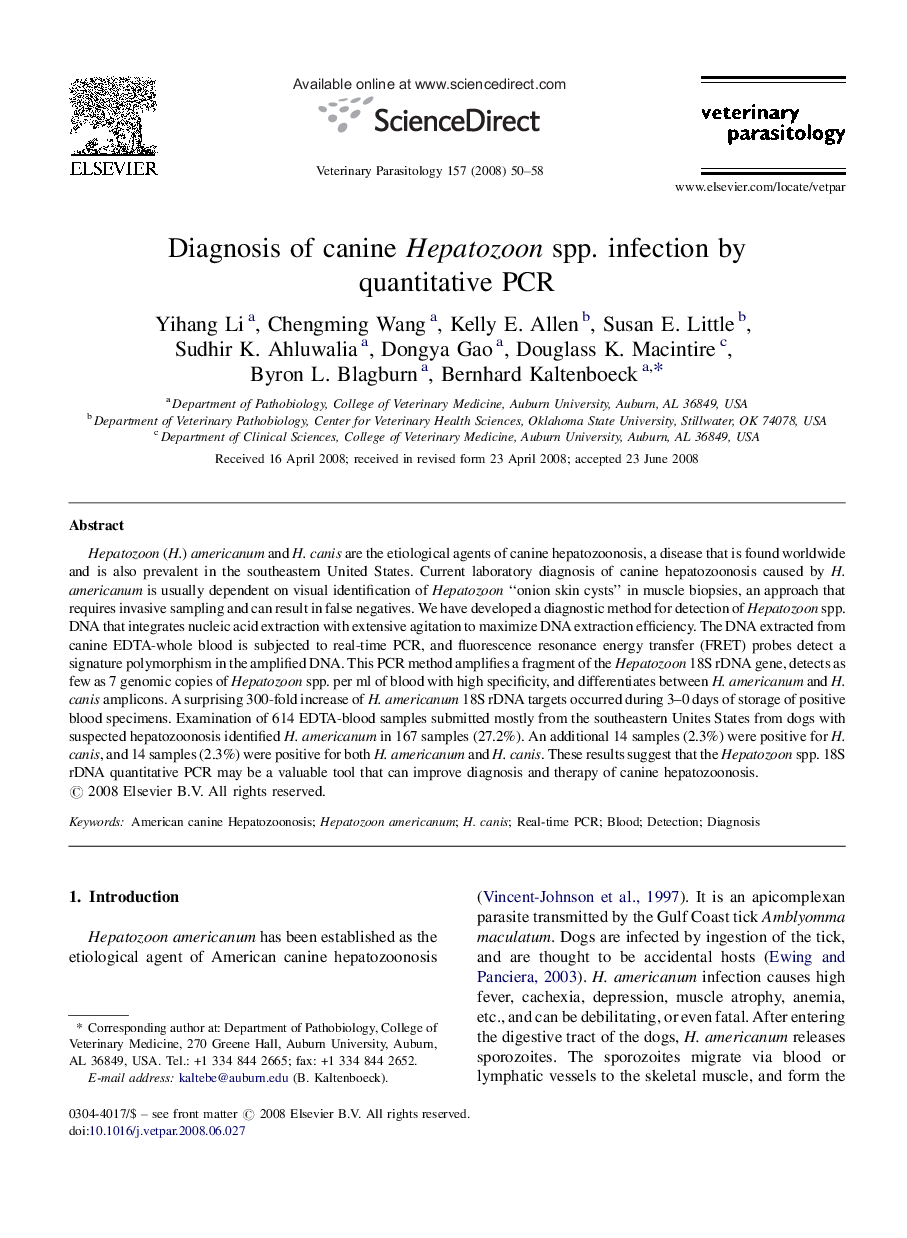| Article ID | Journal | Published Year | Pages | File Type |
|---|---|---|---|---|
| 2471361 | Veterinary Parasitology | 2008 | 9 Pages |
Hepatozoon (H.) americanum and H. canis are the etiological agents of canine hepatozoonosis, a disease that is found worldwide and is also prevalent in the southeastern United States. Current laboratory diagnosis of canine hepatozoonosis caused by H. americanum is usually dependent on visual identification of Hepatozoon “onion skin cysts” in muscle biopsies, an approach that requires invasive sampling and can result in false negatives. We have developed a diagnostic method for detection of Hepatozoon spp. DNA that integrates nucleic acid extraction with extensive agitation to maximize DNA extraction efficiency. The DNA extracted from canine EDTA-whole blood is subjected to real-time PCR, and fluorescence resonance energy transfer (FRET) probes detect a signature polymorphism in the amplified DNA. This PCR method amplifies a fragment of the Hepatozoon 18S rDNA gene, detects as few as 7 genomic copies of Hepatozoon spp. per ml of blood with high specificity, and differentiates between H. americanum and H. canis amplicons. A surprising 300-fold increase of H. americanum 18S rDNA targets occurred during 3–0 days of storage of positive blood specimens. Examination of 614 EDTA-blood samples submitted mostly from the southeastern Unites States from dogs with suspected hepatozoonosis identified H. americanum in 167 samples (27.2%). An additional 14 samples (2.3%) were positive for H. canis, and 14 samples (2.3%) were positive for both H. americanum and H. canis. These results suggest that the Hepatozoon spp. 18S rDNA quantitative PCR may be a valuable tool that can improve diagnosis and therapy of canine hepatozoonosis.
